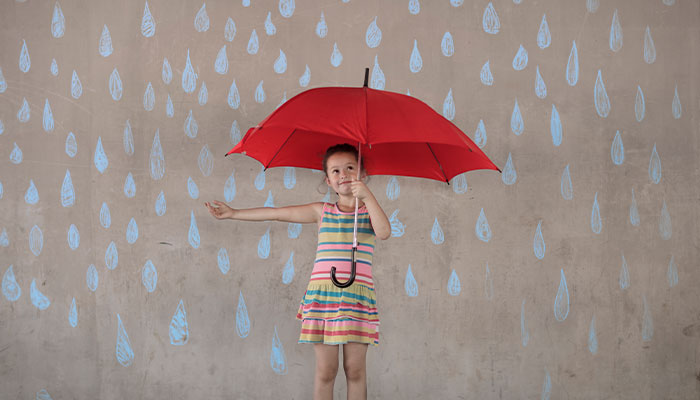While we believe that the books and resources recommended may be of value to you, keep in mind that these are suggestions only and you must do your own due diligence to determine whether the materials are appropriate and suitable for your use. PNC has no sponsorship or endorsement agreement with the authors or publishers of the materials listed.
WEATHER

Raindrop Reactions
Children will investigate properties of water droplets.

Lesson Objective
Children will investigate properties of water droplets on surfaces.
Science
What You'll Need
- Wax paper – one 12" × 12" piece per child
- Pipettes – 1 per child
- Straws – 1 per child
- Spray bottles – 3
- Food coloring
- Aluminum foil – 12"× 12" piece per child
- Paper towels – 1 per child
What To Do
- Choose a rainy day to watch the raindrops on a window. Discuss how the raindrops roll down the window.
- Ask the children what might happen to the raindrops on a different surface, such as the ground, a leaf, or the sidewalk.
- Tell the children they will be experimenting with water droplets on different surfaces.
- Distribute wax paper and pipettes to the children.
- Add a few drops of food coloring to the water in the spray bottle.
- Turn the spray bottle to the fine mist setting.
- Mist each piece of wax paper until it is covered with tiny droplets.
- Have the children share their observations about the water.
- Encourage the children to use the pipettes to move the water around on the wax paper (see Guiding Student Inquiry). Discuss what is happening.
- Give each child a straw to blow the water around on the wax paper. Have the children share their observations.
- Discuss how water resists being divided, and that water is attracted to itself; this is called cohesion (see Did You Know?).
- Repeat the activity using foil, then again using paper towels.
- Discuss how the liquids reacted differently on the different surfaces.
- Discuss how the water droplets moved along and stuck to some surfaces, such as the wax paper and foil; this is called adhesion (see Did You Know?).
- Discuss how the water droplets were sucked into the paper towel; this is called absorption (see Did You Know?).
Resources
Home School Resources
Home educators: use these printable lesson PDFs to teach this lesson to your home schoolers. They're available in English and Spanish.
Content Provided By
Common Core State Standards Initiative – These lessons are aligned with the Common Core State Standards ("CCSS"). The CCSS provide a consistent, clear understanding of the concepts and skills children are expected to learn and guide teachers to provide their students with opportunities to gain these important skills and foundational knowledge [1]. Visit the CCSS


